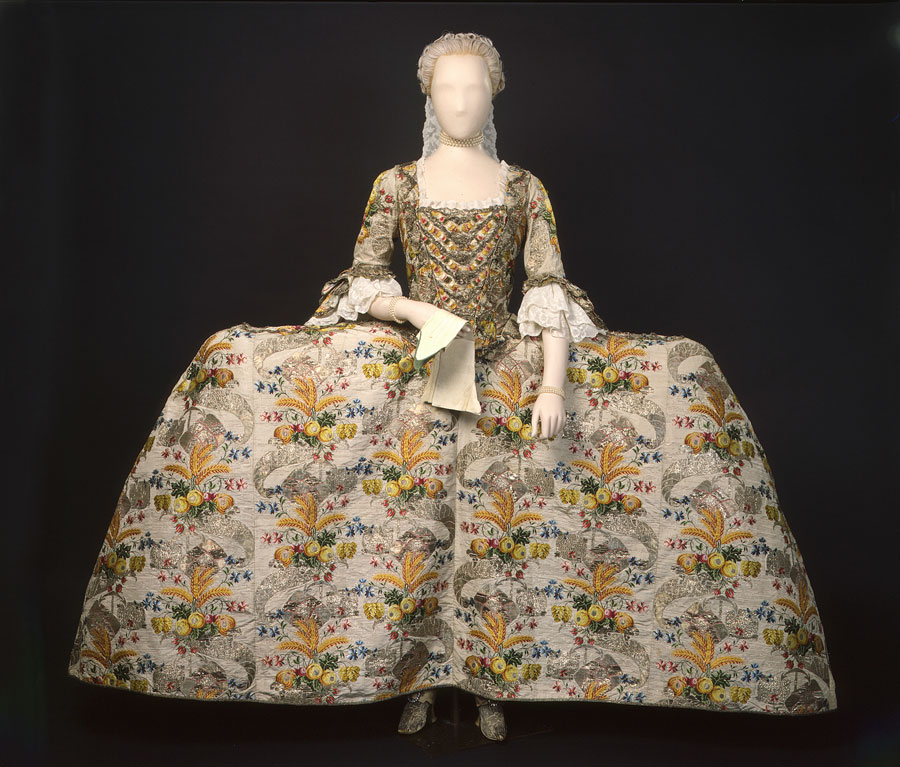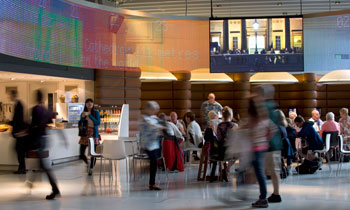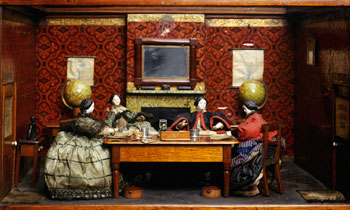Dress and textiles
The focus of this collection is clothes and textiles made, sold, bought and worn in London from the 16th century to the present. The collection ranges from garments made at home to those produced in the studios of London couturiers, from gowns worn at grand occasions to clothes worn every day.
This collection is currently closed to researchers due to a major collections audit, in preparation for the Museum of London’s move to West Smithfield.
Clothes began to be collected as soon as the idea of a museum for London became reality in 1911. Until around the 1960s mainly garments from earlier periods were added with the exception of the two World Wars when contemporary collecting took place. The early curators of the museum were aware of the importance of clothes to bring history to life and in 1933 the museum was the first in Britain to publish a catalogue of its costume collection.
Costume is interesting because it is splendid, ridiculous, useful, pompous, dignified, sombre, gay, fantastic – because, in short, it is human.
REM Wheeler, Keeper and Secretary of the London Museum, 1933
Fashion and accessories
The aim of the dress and textile collection is to represent London’s role as a centre for the production, design and consumption of clothes. It contains over 23,000 objects from the Tudor period to the present day. The majority of dress and textiles from the 16th century to the 19th century consist of fashionable dress and accessories, while objects from the more recent period represent a broader spectrum of society.
Key material
- Clothing by London-based couture houses and designers including Lucile, Hardy Amies, Norman Hartnell, Victor Stiebel, Mary Quant, Katharine Hamnett and Vivienne Westwood.
- Garments made by London ready-to-wear manufacturers and dressmakers.
- Menswear produced by London tailors and designers.
- Clothes sold in London department stores, boutiques and other retail outlets.
- Sportswear and clothing related to hobbies and London societies.
- Occupational clothing including household livery, civil and ceremonial uniforms.
- Garments worn by members of the royal family from Charles I to the mid-20th century.
- Costume and accessories associated with the theatre, music hall, opera, ballet, circus, cabaret and television from the late 18th century to 1970.
- Banners, clothes and accessories related to The Kindred of the Kibbo Kift.
- Fancy dress.
- Textiles manufactured in London, such as silks woven in Spitalfields and printed textiles.
- Suffrage and other banners represent London’s role as a centre for the fashion and clothing industry, from education through to design, production, promotion, retail and wear.
- Dolls dating from the late 17th to the late 20th century.
Costume and fashion prints
The dress and textile collection is complemented by related material in the social and working history, photograph and printed ephemera collections, and the museum library. These holdings include the Harry Matthews Collection of costume and fashion plates consisting of around 3,500 prints dating from the 16th century to 1829.
Costume Society Patterns of Fashion Award
Unfortunately we can no longer accommodate request from students to view the Janet Arnold garments as they are too fragile. Photographs of the objects can be viewed on Collections Online.










